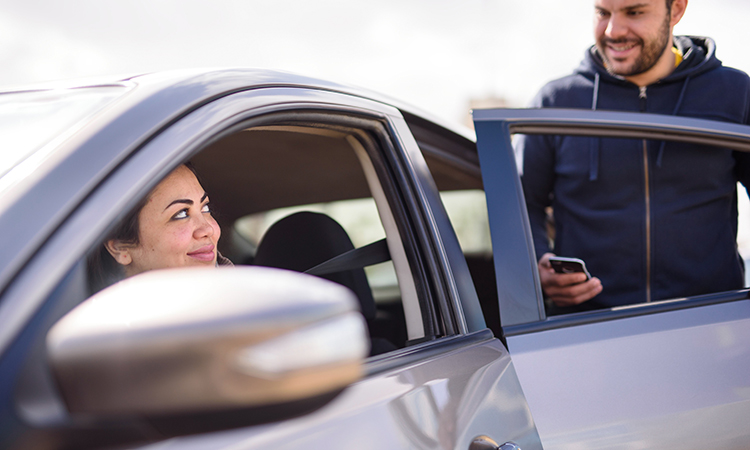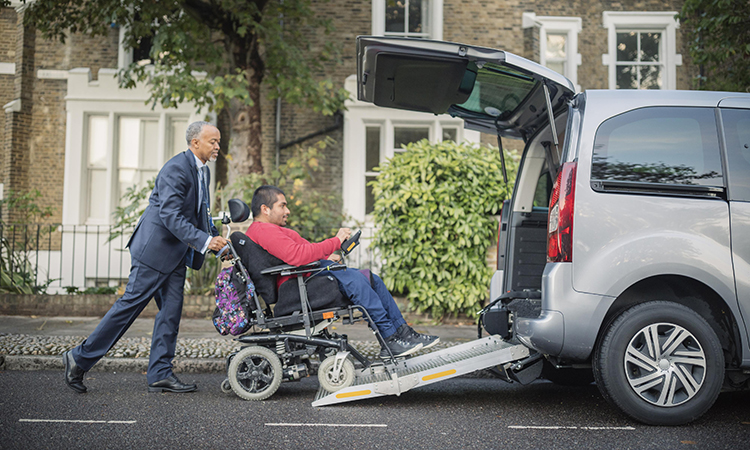Local authorities working with Uber to fight suburban and rural isolation using a hybrid DRT approach
- Like
- Digg
- Del
- Tumblr
- VKontakte
- Buffer
- Love This
- Odnoklassniki
- Meneame
- Blogger
- Amazon
- Yahoo Mail
- Gmail
- AOL
- Newsvine
- HackerNews
- Evernote
- MySpace
- Mail.ru
- Viadeo
- Line
- Comments
- Yummly
- SMS
- Viber
- Telegram
- Subscribe
- Skype
- Facebook Messenger
- Kakao
- LiveJournal
- Yammer
- Edgar
- Fintel
- Mix
- Instapaper
- Copy Link
Posted: 16 January 2023 | Jonna Heikkinen - Uber Transit | No comments yet
Are public transport and ride-hailing services mutually exclusive? Or can they instead work together to increase ridership and better manage operating costs? Jonna Heikkinen, Public Transit Lead – EMEA at Uber, shares her thoughts on how the ride-hailing company is supporting local public transport agencies to deliver a hybrid DRT model where they complement their existing services with Uber.


Credit: Uber
Uber is often used as a verb for describing on-demand mobility services, including transit solutions such as Demand-Responsive Transport (DRT), microtransit and paratransit. The Spectator recently wrote, “Why ‘Uber for the countryside’ is a great idea” and The Times, “‘Uber’ minibuses open route out of rural isolation”. Uber has become a verb for these types of solutions because we have been the forerunner in delivering on-demand technology, making sharing rides easy for people around the world. Since 2009, over 34 billion on-demand trips have been completed through the Uber network.
Local public transport agencies are using Uber to deliver a hybrid DRT model where they complement their existing DRT or paratransit services with Uber”
Yet, it comes as a surprise for many that Uber today is part of several public DRT and paratransit solutions. Uber is working with multiple transport agencies in cities like New York, Boston, Washington D.C., Los Angeles and Melbourne. In these cities, local public transport agencies are using Uber to deliver a hybrid DRT model where they complement their existing DRT or paratransit services with Uber to rescue riders during service interruptions, for example, or to extend their service areas and manage costs during low-demand hours. In addition, new application programming interfaces (APIs) make it possible to integrate these subsidised Uber trips into local public transport apps, making it easier for riders to access the Uber service provided by the local transport authority.
The benefits of a hybrid model
The hybrid model opens doors for local authorities to choose the most cost-efficient and reliable option to meet rider demand any time of the day”
A hybrid model refers to intelligent trip brokering, where local authorities utilise non-dedicated service providers such as ride-hailing services and taxis rationally, as part of their dedicated, agency-supplied fleet model. The non-dedicated vehicles provide more flexibility and cost savings for local authorities by removing a lot of upfront capital investments that are needed to operationalise local DRT and/or incremental paratransit services. The hybrid model opens doors for local authorities to choose the most cost-efficient and reliable option to meet rider demand any time of the day.


Credit: Uber
The hybrid model is already widely accepted in North America and Australia, but Europe has not yet effectively adapted to the model. For example, North American agencies actively use multiple providers to deliver their local DRT solutions, which means that they work in parallel with traditional DRT providers who provide Software-as-a-Service (SaaS) technology to deliver solutions with minibuses and ride-hailing providers, like Uber, as well as with traditional taxis. This has made their local services stronger and more resilient during demand fluctuations, and better suited for local needs. The results speak for themselves.
Supporting microtransit services in Dallas, Texas
The rides that take place on the Uber platform are typically one third the cost of dedicated microtransit or low-density fixed route bus operations”
For example, in Texas, Dallas Area Rapid Transit (DART) – a multimodal agency comprising 13 suburban and rural cities – has been working with Uber in their microtransit zones since 2019. As of 2022, DART is providing microtransit services in 32 unique zones, with estimated time of arrivals (ETAs) of 15 minutes or less. They are able to achieve this level of service with only 36 dedicated wheelchair equipped minibuses.
Today, 70% of their on-demand trips are provided by their transport agency-supplied vehicles, while 30% of trips are provided through partnership with Uber. This hybrid approach strengthens DART’s operations by adapting to constantly changing needs in a community that previously suffered from lack of access to traditional public transportation with fixed transit routes. The rides that take place on the Uber platform are typically one third the cost of dedicated microtransit or low-density fixed route bus operations.


Credit: Uber
Solving cities’ three biggest challenges
Utilising ride-hailing as a complementary service for public transportation can offer powerful new options for city planners who are tackling pollution, congestion and parking shortages. This is why the future of DRT and paratransit should consider two models for fleet sizing.
Model one: Fixed fleet
In model one, fleets are operated solely with a fixed fleet of vehicles and drivers. This model creates a risk that the fleet is being under-utilised during low demand hours, driving up costs for the agency and prolonging wait times during peak hours, which leads to poorer customer experiences and difficulties meeting demand.
Model two: Fixed fleet complemented by non-dedicated providers
In model two, fixed fleets are complemented with non-dedicated providers, such as ride-hailing and taxis. This balances operations, creates cost-savings for the agency and provides greater flexibility by delivering an on-demand user experience that doesn’t require pre-booking or making other preparations.
Adapting to a post-pandemic world
It is important that public transport and shared mobility companies actively cooperate to return to the pre-pandemic situation where public transportation can continue keeping the leading position”
Especially now, in a post-pandemic world, the public transport industry has suffered from tighter budgets, disappearing rural bus routes and challenges to gain ridership back to pre-pandemic levels. People in these disappearing transport service areas have started increasingly relying on privately used cars. It is important that public transport and shared mobility companies actively cooperate to return to the pre-pandemic situation where public transportation can continue keeping the leading position, as it has been in Europe for some time. Local authorities can utilise shared mobility to fill different service gaps in the system to strengthen their networks, regardless of whether the user is living in the urban core or a rural community, and to manage their operating costs to deliver the best possible service for local communities.


Credit: Uber
A mindset shift might also be required, as minibuses are often seen as a public service but smaller vehicles are not. Regardless, local DRT and paratransit operations are suffering from the fact that, sometimes, those minibuses are running empty or nearly empty. During those low-demand hours, smaller vehicles would provide a more cost-effective option in general, and could be ordered based on actual demand. Flexible DRT has a key role in maintaining coverage across the country and keeping these services financially more viable.
Supporting the creation of thriving communities
Uber empowers local authorities with transit technology to help everyone in their community thrive”
From seniors with special needs to rural communities and the general public, Uber empowers local authorities with transit technology to help everyone in their community thrive. Uber is helping those living in rural areas without a car who have become more isolated as bus services shrink away. We provide a state-of-the-art DRT technology platform to enable local authorities to manage real-time ride requests, along with scheduled reservations through a call centre, and to match riders with the right transit vehicle to efficiently pick up and drop off passengers. We are here to complement public transportation in areas where it makes sense.


Related topics
Accessibility, COVID-19, Fleet Management & Maintenance, Journey Planning, Mobility Services, On-Demand Transport, Passenger Experience, Traffic Management
Related cities
Dallas
Related countries
United States
Related organisations
Dallas Area Rapid Transit (DART), Uber, Uber Transit
Related people
Jonna Heikkinen








